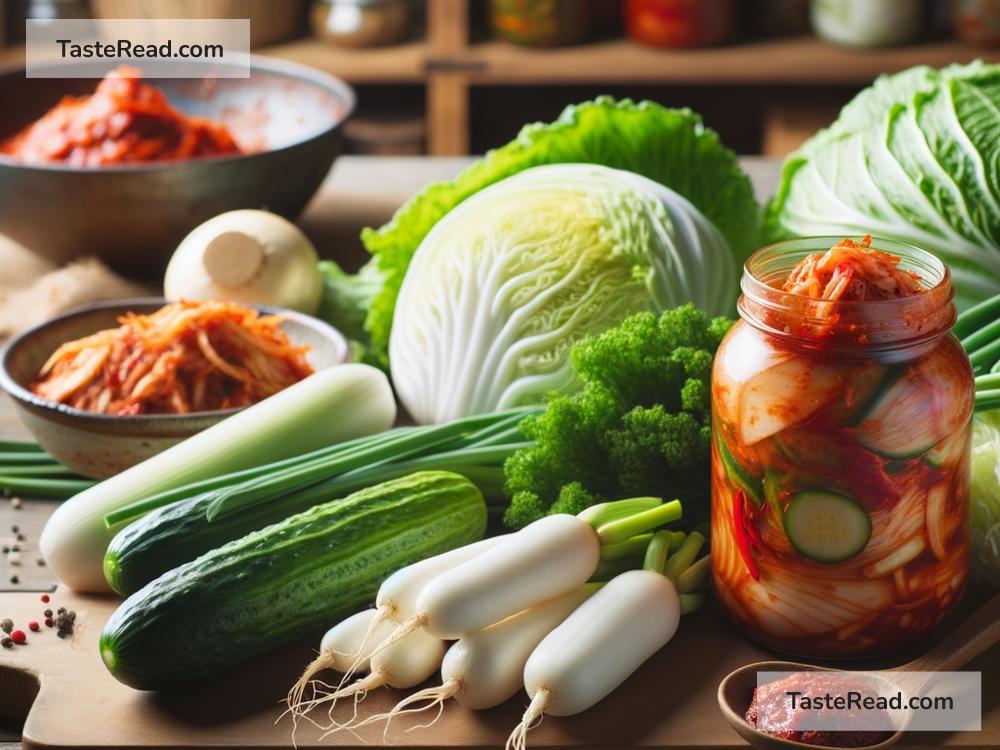How to Ferment Kimchi: A Simple Guide to Making This Tasty Korean Dish
Kimchi is a delicious and healthy Korean dish made from fermented vegetables. It’s tangy, spicy, crunchy, and packed with probiotics that are great for your gut. While store-bought kimchi is convenient, making it at home can be fun, rewarding, and much more affordable. Don’t worry if you’ve never fermented anything before—this easy guide will help you get started!
What is Kimchi?
Kimchi is one of Korea’s most famous foods. Traditionally, it’s made with napa cabbage as the main ingredient. Other vegetables like radish and green onions can also be added. The vegetables are flavored with spices, garlic, ginger, fish sauce, and chili flakes. Once mixed, everything is left to ferment for a few days or weeks, depending on personal taste.
Why Ferment Kimchi at Home?
There are many reasons to make kimchi yourself. First, you have control over the ingredients, so you can adjust the spice level or avoid fish sauce if you prefer a vegetarian version. Second, homemade kimchi is fresh and full of probiotics, which help digestion and boost your immune system. Most importantly, it’s a satisfying and creative process!
Ingredients for Basic Kimchi
To get started, here are the ingredients you’ll need:
- 1 medium head of napa cabbage
- 1/4 cup salt (kosher or sea salt is best)
- 1 medium radish (optional), julienned
- 4 green onions, sliced
- 1/4 cup Korean chili flakes (gochugaru)
- 2–3 tablespoons fish sauce or soy sauce (for vegetarians)
- 1 tablespoon sugar
- 5 cloves garlic, minced
- 1 teaspoon ginger, grated
You’ll also need a large bowl and a clean glass jar or container for fermenting.
Step 1: Prepare the Cabbage
Start by cutting the napa cabbage into quarters, then chop it into bite-sized pieces. Put the cabbage in a large bowl and sprinkle the salt over it. Toss the cabbage with your hands to make sure the salt is evenly distributed. Let it sit for about 2 hours. This process draws water out of the cabbage, which helps the kimchi stay crunchy during fermentation.
After 2 hours, rinse the cabbage thoroughly under cold water to remove excess salt. Then drain the cabbage well and set it aside.
Step 2: Make the Paste
Kimchi gets its amazing flavor from a paste made of spices, garlic, ginger, and fish sauce. To make the paste, combine the chili flakes, minced garlic, grated ginger, fish sauce, and sugar in a small bowl. Mix it into a thick paste.
Tip: If you want your kimchi less spicy, reduce the amount of chili flakes or use a mild chili powder instead.
Step 3: Mix Everything Together
Now it’s time to combine the cabbage, radish (if using), green onions, and spice paste. Wear gloves or use clean hands, and massage the paste into the vegetables. Make sure every piece is coated evenly—this is when the flavors really start coming together!
Step 4: Pack and Store
Transfer the coated vegetables into your clean glass jar or fermenting container. Pack the mixture as tightly as possible to remove any air pockets. You can press it down with a spoon or your hand.
Leave about 1–2 inches of space at the top of the jar because the kimchi will release liquid and bubbles during fermentation. Place a lid loosely on your jar—you want it to be covered but still allow gases to escape. Alternatively, you can use a fermentation weight and airtight lid designed for fermenting.
Step 5: Ferment the Kimchi
Now the magic of fermentation begins! Leave the jar at room temperature for 1–5 days, depending on how tangy you like your kimchi. During this time, you’ll see bubbles forming and liquid rising in the jar—this means fermentation is working!
Taste your kimchi every day to see how it’s developing. Once it reaches your desired tanginess, move it to the refrigerator to slow down the fermentation process. Refrigerated kimchi can last for weeks or even months.
Tips for Success
- Use fresh vegetables: Fresh produce will give you better flavor and crunch.
- Sanitize your equipment: Make sure your bowl, spoon, jar, and lid are clean to avoid bad bacteria.
- Balance the flavors: If the kimchi is too salty, add a bit more sugar. If it’s too spicy, reduce the chili flakes in future batches.
How to Enjoy Kimchi
Kimchi is incredibly versatile! You can eat it on its own as a side dish, mix it with rice, or use it as an ingredient in soups, stir-fries, and pancakes. The possibilities are endless!
Final Thoughts
Making kimchi at home might sound intimidating at first, but it’s easier than you think! Follow these simple steps, and you’ll have a jar full of homemade kimchi that’s delicious, nutritious, and full of flavor. Experiment with different vegetables and spice levels to create your perfect batch. Happy fermenting!

